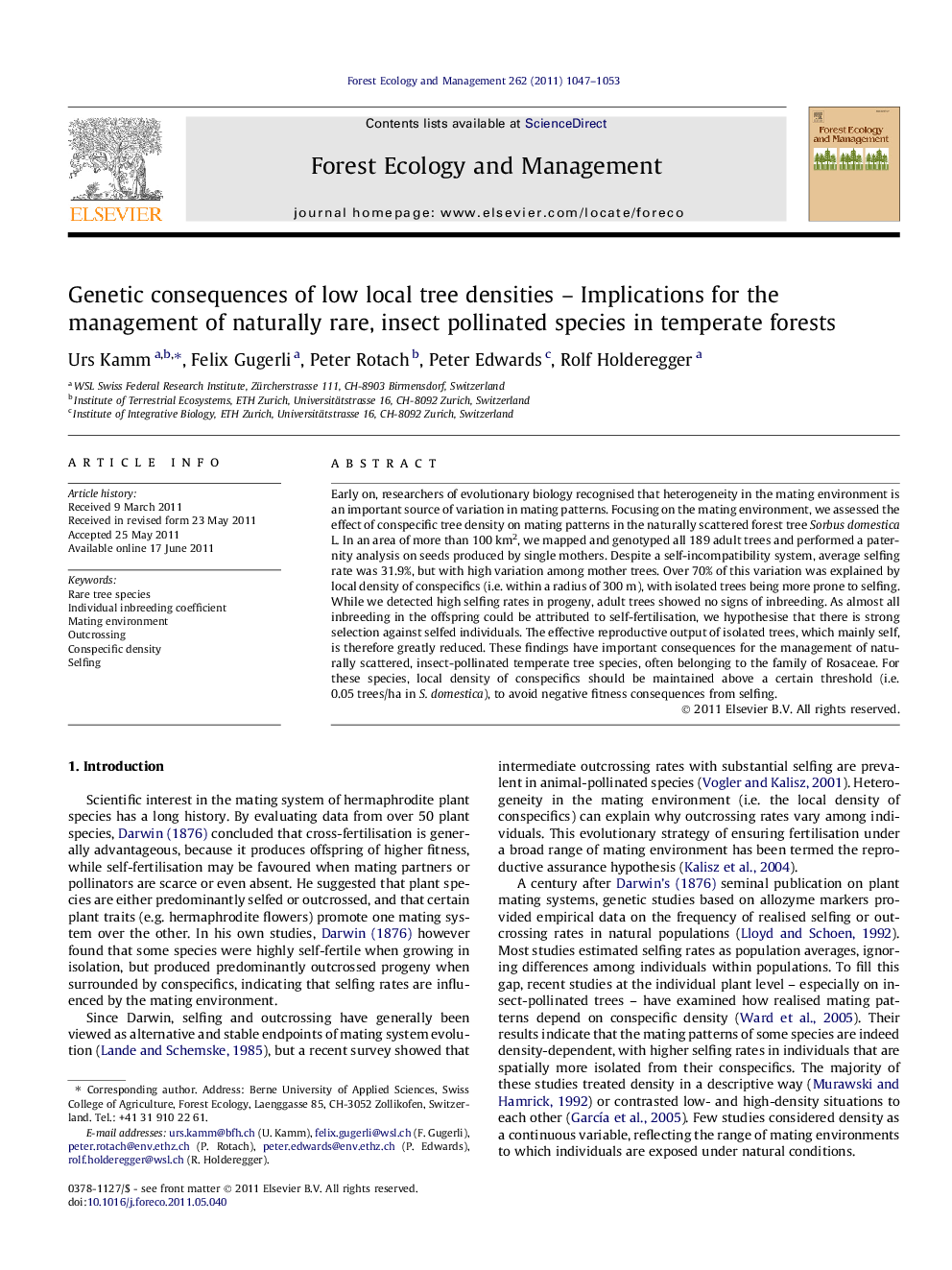| کد مقاله | کد نشریه | سال انتشار | مقاله انگلیسی | نسخه تمام متن |
|---|---|---|---|---|
| 87847 | 159269 | 2011 | 7 صفحه PDF | دانلود رایگان |

Early on, researchers of evolutionary biology recognised that heterogeneity in the mating environment is an important source of variation in mating patterns. Focusing on the mating environment, we assessed the effect of conspecific tree density on mating patterns in the naturally scattered forest tree Sorbus domestica L. In an area of more than 100 km2, we mapped and genotyped all 189 adult trees and performed a paternity analysis on seeds produced by single mothers. Despite a self-incompatibility system, average selfing rate was 31.9%, but with high variation among mother trees. Over 70% of this variation was explained by local density of conspecifics (i.e. within a radius of 300 m), with isolated trees being more prone to selfing. While we detected high selfing rates in progeny, adult trees showed no signs of inbreeding. As almost all inbreeding in the offspring could be attributed to self-fertilisation, we hypothesise that there is strong selection against selfed individuals. The effective reproductive output of isolated trees, which mainly self, is therefore greatly reduced. These findings have important consequences for the management of naturally scattered, insect-pollinated temperate tree species, often belonging to the family of Rosaceae. For these species, local density of conspecifics should be maintained above a certain threshold (i.e. 0.05 trees/ha in S. domestica), to avoid negative fitness consequences from selfing.
► In an insect pollinated, temperate forest tree with self-incompatibility system individual trees showed selfing rates from 0% to 70% .
► Differences in mating patterns among trees were largely explained by variation in the local tree density surrounding the corresponding tree.
► We showed that local tree density, may represent a reliable surrogate for the quality of the mating environment from an individual’s perspective.
► Our results have important consequences for the management of naturally scattered, insect-pollinated tree species in temperate forests.
► Local tree density should be maintained above a certain threshold to minimize potential negative fitness consequences from self-fertilization.
Journal: Forest Ecology and Management - Volume 262, Issue 6, 15 September 2011, Pages 1047–1053